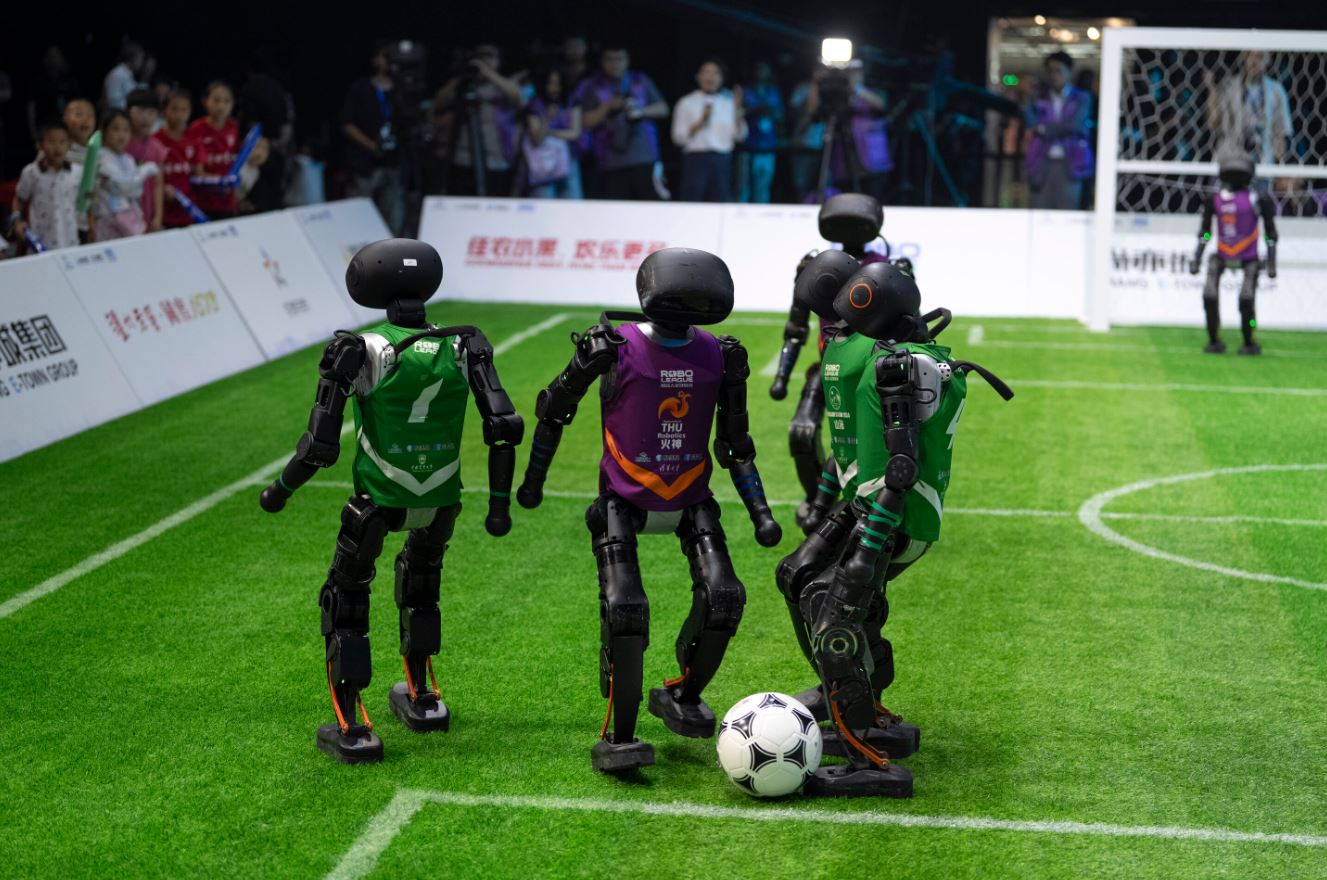 In Beijing, a fascinating experiment unfolded as humanoid robots took to the pitch for fully autonomous 3-on-3 soccer matches. These robotic athletes, powered by advanced AI and sophisticated sensors, captured the imagination far more than China’s national men’s team could.
In Beijing, a fascinating experiment unfolded as humanoid robots took to the pitch for fully autonomous 3-on-3 soccer matches. These robotic athletes, powered by advanced AI and sophisticated sensors, captured the imagination far more than China’s national men’s team could.
At the inaugural RoBoLeague, four teams of robots competed without human supervision. Each unit navigated the field using smart strategies and agile movements—even managing to stand up after a fall. Sure, a few needed a helping hand off the pitch, but these moments only added to the event’s charm and realism.
Cheng Hao, founder and CEO of Booster Robotics—the firm behind the players—explained that sporting events like this serve as essential testing grounds. By pitting robots in real-world challenges, they can ensure safety before any future matches with human players. His vision is one where both human and robot athletes can share the field in a safe, engaging environment.
Booster Robotics provided hardware for university teams, each customising their own algorithms for perception, decision-making, and strategy. The collective effort reached its peak in an exciting final, with Tsinghua University’s THU Robotics edging out China Agricultural University’s Mountain Sea team 5-3.
This event highlights China’s commitment to advancing AI and robotics by bringing sophisticated technology into the dynamic world of sports. As these competitions grow, we’ll see even more tangible proofs of how smart tech can transform traditional games.








